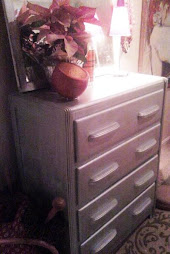6. Is there a convenient spot for a guest to put down a coat or hang a bag? How about one for yourself? If you don't already have one, consider establishing a landing strip in your home near your front door. This alone can do a lot towards alleviating a clutter takeover in your home.
7. How about a spot that I feel comfortable entertaining a guest? Maybe you spend a lot of time in your home alone, maybe you hate having anyone over, but when you do, step back and take a look at how comfortable someone is. Where do they choose to sit? You can learn a lot about your home from a visitor. You don't need a formal living room, just two chairs with someplace to put down a glass of water.
8. Can I vary the mood in my home with lighting to serve that room's functions? There should be reading lights within easy reach of the bed or sofa, enough light in the kitchen to chop by or peer into the back of your pantry. If you're always squinting, time to consider a well-place lamp or at least the wattage of your lightbulbs. Before you make any major changes in your home, invest in some lighting. That may be all the work you need.
9. How organized is my home? Is your clothing closet well-organized enough that you can get dressed in 15 minutes? Do you have the makings of quick meal to feed an unexpected guest? What about your bathroom? Are all the things you need easily accessible or do you have so many things to take out and put away in the morning that you create a tornado that you then dread putting away?
10. And, perhaps most importantly, do I feel happy walking into your home? Are you proud of your home? Your home should make you smile to be there.




















































